NDTV gets notice for alleged violation of forex rules:Read abt allegations/counter claims in
NDTV -- Sham transactions or legit deals?
How much merit is there in allegations of financial misdemeanour, money laundering and tax evasion against NDTV?
PRANATI MEHRA and PARANJOY GUHA THAKURTA investigate in a 3 part series.
This story is a slew of claims and counter-claims, with allegations of financial misdemeanour, money laundering and tax evasion flying thick and fast. The dramatis personae includes two political heavyweights one of whom is a cabinet minister, one of the country’s best know TV personalities who is owner of a media company, a controversial income tax official with an arrest warrant against him and two of his female colleagues accusing him of slander.
Behind the allegations levelled last December by Ram Jethmalani against finance minister P Chidambaram, and NDTV, is an account of what is a major tax dispute involving a media organisation. And since a reasoned order of a tax panel (Dispute Resolution Panel) was passed on December 31, 2013, The Hoot decided to examine the whole story. Many of those contacted by us spoke only on condition of anonymity.
To begin with, here's a short list of the dramatis personae.
* Ram Jethmalani, 90-year-old former Union Law Minister and member of the Rajya Sabha belonging to the Bharatiya Janata Party. (Though his relations with his party have been strained of late).
* Palaniappan Chidambaram, Union Finance Minister, who is also a lawyer and a member of parliament.
* Prannoy Roy, one of the best-known faces on Indian television and co-founder of the New Delhi Television (NDTV) group of companies which is currently going through a phase of financial stress. He is perceived by some as leaning towards the Congress though he would have us believe he is not politically partisan. An important shareholder in the group's flagship is a company promoted by Abhey Kumar Oswal whose daughter is married to industrialist and Congress MP Naveen Jindal.
*Sanjay Kumar Srivastava, an officer of the Indian Revenue Service (IRS), currently Commissioner of Income Tax in the Central Board of Direct Taxes, Ministry of Finance. He has accused Roy's company of not just evading taxes but also aiding the Finance Minister and his son in laundering money. A warrant of arrest has been issued against him for contempt of court in a case filed by two of his female colleagues from the IRS, Sumana Sen and Ashima Neb.
*Swaminathan Gurumurthy, Chennai-based chartered accountant, journalist and leading light of the Swadeshi Jagaran Manch affiliated to the Rashtriya Swayamsevak Sangh, the ideological parent of the BJP, who has actively been pursuing the allegations against NDTV with Roy, and to whose questions Roy had replied.
*Madhu Kishwar, founder of the Manushi organisation which espouses feminist causes, and whose website was one of the first to air the allegations against NDTV, a supporter of Gujarat Chief Minister Narendra Modi, and someone against whom NDTV has served a notice of libel.
Other players in the story include Prayaag Akbar, son of journalist M.J. Akbar. A publication with which Akbar is associated has been sued by NDTV for defamation.
Srivastava’s allegations
IRS officer Srivastava filed an application in the special CBI court of Judge O P Saini in November 2011 listing out a series of allegations against NDTV, Chidambaram and two of his colleagues (Sen and Neb). Judge Saini who is hearing the cases relating to the 2G (second-generation) telecommunications spectrum scam, threw out his application on the ground that he had not been able to furnish evidence linking the Finance Minister with the funds allegedly laundered by NDTV.
The two women IRS officers, Sen and Neb, then moved the Delhi High Court alleging that Srivastava had continued to use intemperate and defamatory language against them despite several restraining orders by courts. They moved the court to issue orders against him for contempt of court. A single judge bench held Srivastava guilty of civil contempt and ordered his imprisonment for 15 days and imposed a fine of Rs. 2,000 on him. A division bench of the court subsequently confirmed this order and a warrant of arrest was issued against Srivastava.
Documents relating to these allegations, including Srivastava's November 2011 application, had been circulated among journalists but the story was largely ignored until a sensational letter written by Jethmalani to Chidambaram became available on various websites.
In a letter dated December 6, 2013, Jethmalani claimed that Chidambaram and his son were beneficiaries of a large sum of money laundered by companies associated with the NDTV group located outside India. The monies had allegedly been given to father and son in 2007 in the form of bribes by telecommunications companies whose activities are being probed in the 2G spectrum scam.
On 19 December, Chidambaram replied to Jethmalani describing his allegations as "outrageous" and said he had forwarded his letter with annexures that had been attached to the Finance Secretary-cum-Revenue Secretary Sumit Bose (the senior most officer in the Ministry of Finance) to inquire into the veracity or otherwise of the allegations.
Sources in the office of the Finance Secretary told one of us that investigations are being conducted but nothing has been found so far to substantiate the allegations of money laundering against the Finance Minister made by Srivastava and repeated by Jethmalani and Gurumurthy. (Gurumurthy has, of course, doubted if Bose can conduct investigations in an impartial manner since he is, after all, Chidambaram's subordinate in the Ministry of Finance.)
Investments under scrutiny
According to Jethmalani's letter, a mysterious group of investors allegedly gave NDTV 300 million UK pounds (the currency is given as USD elsewhere) in 2006 which was paid into the group's London-based subsidiary company, NDTV Network, Plc (NNPlc). These allegations were being investigated by Srivastava (who was then an Additional Commissioner of Income Tax in its inspection wing). Crucial pages in the files that he had prepared are said to be missing, and Jethmalani says these related to Chidambaram’s role in the money laundering conspiracy. Srivastava thereafter investigated the accounts of NDTV’s group companies and claimed that he had found another allegedly fraudulent transaction. The day after a notice was issued to NDTV in this regard, Srivastava was suspended.
Subsequently, his letter says, it was claimed that the NDTV group shut down its London subsidiary although it had provided a return of 52,000 per cent on investments that had been made in 2011. The source of funds used to liquidate the company was allegedly not explained by NDTV.
NDTV’s transactions of the last few years have been examined in a report of the Income Tax Department's Dispute Resolution Panel (DRP). Sources in Finance Secretary Bose's office said the proceedings of the DRP, which are quasi-judicial in nature, will follow their course.
The allegations against NDTV are complex in nature. In an order dated December 31, 2013, the DRP(comprising three officers of the rank of Commissioner, Income Tax) said that NDTV Ltd had entered into a "sham transaction" with Universal Studios BV, Netherlands. Universal Studios BV is a subsidiary of NBC (National Broadcasting Company) Universal Inc., USA and is part of the GE (General Electric) Corp group.
What are these transactions?
- Universal Studios BV bought stake in NDTV’s subsidiary NDTV Networks International Holdings (NNIH), Netherlands for $ 150 mln (or Rs 642 cr) in 2008-2009. By the same transaction, Universal Studios indirectly acquired 26 per cent stake in NDTV Networks Plc, (NNPlc) the London subsidiary.
- The stake was bought back by NDTV Networks BV, Netherlands for Rs 58 cr in the next financial year.
- This is what the DRP calls a sham transaction.
- The second transaction is : NDTV Networks PLc raised $ 100 mln in the UK by way of step up coupons (bonds) in 2007. The original investors were eight entities, some of them in the Cayman Islands and British Virgin Islands.
- These bonds were devalued in 2009 when they were redeemed for a total of $72.5 mln.
- The third transaction is an unsecured loan of Rs 365.25 cr rasied by NDTV through NNPlc and NDTV Networks BV. While the DRP has added Rs 254.75 cr out of this amount to NDTV’s income since it seems "not genuine" it has left out Rs 110.50 cr since it relates to the 2007 step up coupons (specifically the currency fluctuation) while the DRP is examining only the assessment year 2009-10 or financial year 2008-09.
- When NDTV says that in the NBCU transaction, of the $ 150 mln, $ 50 mln were to be used by its downstream subsidiaries, it probably refers to this loan of Rs 254.75 cr, which the DRP has taken as a separate transaction.
The Income Tax Department's DRP ordered the assessing officer for NDTV Ltd to accordingly make an assessment. The DRP’s orders are binding on the assessing officer and can only be challenged at the level of the Income Tax Appellate Tribunal (ITAT).
Highly-placed sources in NDTV stated that the two investments in the group can be explained in very clear and simple terms. "First, a leading US TV network, NBC (a subsidiary of GE) invested $150 million, primarily in NDTV's new entertainment channel 'Imagine'. The channel did not do well and NBC liquidated its holding for $25 million." (The DRP however cites a much lower figure in crores.)
They added that all the transactions were publicly reported by GE to the Securities and Exchange Commission, the financial regulatory authority in the United States, and by NDTV to the Reserve Bank of India and the Securities and Exchange Board of India (SEBI).
As far as the second deal is concerned, NDTV sources said that Jeffries, a leading US investment banker, took the lead in arranging a loan (through the issuance of a kind of financial debt instrument or bond called 'step up coupons') of $100 million to NDTV. The global markets crashed a year later and the bond holders needed liquidity and negotiated to redeem the loan for $72.5 million. The sources said these transactions too "were globally audited and meticulously reported in full in NDTV's annual reports".
The Income Tax Department however has alleged that the details of the NBC Universal transaction were never mentioned by NDTV in its balance sheet for the year 2008-09 nor revealed to the department’s investigation wing when it asked for it in 2010. It further claimed that details of the transaction were not disclosed to the department's assessing officer in February 2013.
The assessing officer wrote: "This subscription of shares of the assessee’s (NDTV Ltd) group company (NDTV Network International Holdings BV), having a face value of Rs. 40-50 per share (equivalent to one $ in INR) by NBCU (NBC Universal) @ Rs.7,015.05 per share and its subsequent sale back to the assessee’s other group company @ Rs.634.17 per share, is therefore a sham transaction and it is a fit case which requires the lifting of the corporate veil."
It was further alleged that the share price was arrived at not by any valuation either by the seller or buyer and that no confirmation from NBCU about the transaction was filed.
NDTV’s explanation for the huge difference in share prices at the time of sale and repurchase was a mutual future projection (by the seller and buyer) of the success of NDTV’s ventures. These projected events did not eventually materialise. The company said they had sold a "dream" to Universal Studios and the dream later turned sour. Hence, the low price at which NDTV Networks BV, Netherlands could buy back its stake.
NDTV said the investor was part of the globally renowned GE Corporation and was involved in many such ventures succeeding or failing in a particular year. Hence, the particular transaction relating to NDTV need not be viewed with suspicion. The deal was a subscription to pick up a fresh stake, it was pointed out.
Besides, NDTV said it had made a disclosure of the transaction in its "notes to accounts" in the company's audited accounts for the financial year 2008-09 and also disclosed the buyback of 26 per cent stake in NDTV Network Plc in its audited accounts for 2009-10. Thus, the company argued, there was neither concealment of the transaction nor any attempt to do so.
Soon after the transaction between companies in the GE and NDTV groups took place, the international financial markets collapsed. The funds obtained had been used mainly for the entertainment channel, NDTV Imagine. When that failed, NBCU wanted to exit and, in fact, did so 18 months after coming in, according to NDTV’s explanation.
The DRP also pointed to the subsidiaries NDTV floated abroad, and observed that “some of the subsidiary companies are incorporated and liquidated by the promoters at frequent intervals.” Why did the group chose to float as many as 21 subsidiaries and associate companies abroad, some of them in tax havens?
NDTV sources claimed that this was on account of "tax efficiency". They said: "Of the 21 subsidiaries of NDTV listed in NDTV's annual report for 2009-2010, ten were in India and eleven were overseas (four in the Netherlands, four in Mauritius and one each in the UK, Sweden and the United Arab Emirates). Of the eleven associate companies mentioned in the report, eight were in India and three in Mauritius."
The structure was set up following advice from Pricewaterhouse Coopers and international legal firms keeping in mind that NBCU wanted to be a part of NDTV 's entertainment business through its Dutch subsidiary, they added.
Many international financial transactions and deals are routed and structured through tax havens to avoid payment of taxes. So in the eyes of the tax department these deals toowereprobably no exception.
The Income Tax Department's DRP, however, sought to place all the evidence against NDTV in the context of the Base Erosion and Profit Shifting (BEPS) initiative of the Organisation for Economic Cooperation and Development (OECD) which aims at preventing double non-taxation in international transactions.
"Two conglomerates are involved in this transaction--- (one) NDTV Ltd and its subsidiaries and the second is (the) GE group of companies. As is well known, NDTV has its operation mainly in India and its proposed venture(s) of NDTV Labs etc were also located in India. It is not possible to fathom out the intention or rationale to float the companies in the Netherlands to indulge in such complex and layered transactions. This is the precise kind of holding structures which are the subject matter of (the) BEPS project," the DRP stated.
When the DRP asked the company to furnish the information before December 2013, NDTV did provide details about eight corporate entities, most of them registered in Cayman Islands, describing them as 'initial investors' in the step-up bonds issued.
It also gave a copy of a loan agreement between NBCU, NDTV Ltd, NDTV Plc, and NDTV Networks BV.(This transaction is discussed a little later).
NDTV sources claimed that of the eight bond-holders, two were registered in the UK, and one each in the US and Switzerland. The bonds were subscribed by well known international financial companies such as Credit Suisse, Liberty Harbour (part of Goldman Sachs), Lehman Brothers and other "reputed" names. They added that all documents pertaining to their identity and credit-worthiness were filed with the tax department and confirmed by Jefferies (the placement agent) and the Bank of New York (the trustee).
On the issue of another loan of Rs 365.25 cr raised by NDTV through NNPlc and NDTV Networks BV, the DRP observed that a claim of Rs.110.5 crore relates to a different year of assessment and was, therefore, being left out. However, the DRP said the panel was not convinced about the "genuineness" of the balance amount of Rs.254.75 crore and chose to add it to NDTV’s taxable income.
Thus, the total additions to NDTV’s income for the assessment year 2009-10 would be close to Rs.900 crore, and the tax payable on this would be around Rs 300 cr if one assumes that the company has to pay corporation tax at the rate of, say, 33 per cent. Penalties and interest may be added.
During our conversation with representatives of the top management of NDTV, they repeatedly asserted that all transactions that had been entered into were above board and had been disclosed to the tax authorities.
They said that the negotiations with representatives of NBC Universal and the GE Corporation (for the investment of $150 million) had gone on for six months. "Jeff Zukker, who was then head of the NBC group (and who now heads CNN International), personally participated in the discussions," the sources added.
On the issue of step-up coupons through which NDTV Networks Plc raised $100 million in 2007, the sources emphasised that the money was paid back in 2009 though not in full, since market conditions had deteriorated drastically in the wake of the worldwide recession. While $70 million was paid back in principal amount, an additional $2.4 million was paid by way of interest. NDTV sources said the discounted value of the bonds was paid after considerable negotiations in a deal handled by UBS, New York.
The sources in NDTV said the group had raised loans from the overseas branches of two nationalised Indian banks, namely, Bank of Baroda and Bank of India, to pay back the investors in the step-up coupons that had been issued. They again argued that these transactions were above board.
The deals were structured by lawyers engaged by GE Corp of the US (of which NBC Universal is a subsidiary) and professional accountants from KPMG and PricewaterhouseCoopers, the NDTV sources added.
The sources added that in the case of the NBC deal, the share subscription agreement said that up to $ 50 million (of the total of $150 million) could be used by "downstream" companies of the NDTV group. "The Indian tax authorities have unfortunately taken this $50 million to be a separate transaction and wrongly alleged that NDTV did not pay tax on this amount," the sources in NDTV argued, adding that this "amounts to double taxation".
The step-up coupons worth $100 million issued in 2007 seem to have generated a lot of controversy and this is because some of the addresses of the subscribers to the issue are those of attorneys in tax havens like British Virgin Islands and Cayman Islands. Among the investors is also Lehman Brothers (International) Europe, located at 25 Bank Street, London,Liberty Habour (a Goldman Sachs Fund) based out of New York and Credit Suisse, London.
Srivastava rejects NDTV explanation
Srivastava’s counsel, S. K. Gupta rejected NDTV’s explanation given to us on the repayment to bond investors to the tune of $72.4 million. He claimed in a written communication that NDTV had not explained why investors would forego $27.6 million and why the investors did not invoke the guarantees given to them by NDTV Ltd. He also asked how the loans from Bank of India and Bank of Baroda were repaid.
NDTV sources told us that under the bond agreement, there was an undertaking to provide a guarantee at the appropriate time, which would be limited to 40 per cent of the value of the original bonds or $40 million. Therefore, the bond-holders were better off settling for the $72.4 million in 2009. In any case a guarantee was not provided, they said, adding that the "loans taken from Indian Banks to buy out the bonds, were repaid through the proceeds of the sale of NDTV Imagine to Turner Asia Pacific Ventures, a Time Warner company".
On whether these transactions are reflected in the balance sheets of NDTV and its subsidiaries, Srivastava claims they are not, while NDTV sources contend that the relevant documents have been given to tax officers in India, including documents relating to the tax deducted at source (TDS) return of NDTV Networks Plc.
The sources in NDTV said that much would depend on what is contained in the fresh order of the income tax authorities issued to the company based on the December 31, 2013 findings of the DRP. The company would thereafter decide whether or not it should appeal before the appellate body, ITAT.
NDTV sources said the fundamental flaw in the argument put forth by IRS officer S. K. Srivastava and others is that there is a presumption of guilt based on the following "universal truth", namely, "that NBCU used a tax friendly country, the Netherlands, and some of the bond holders are registered in tax havens and therefore were dealing in 'hot money' and that all this 'hot money' has round-tripped from India.'
The sources said that "the NBCU deal was done in the jurisdiction of Netherlands because it was tax efficient for both parties". They added: "Companies and individuals do try and do transactions that are both legal and tax efficient. There is nothing wrong with that. Almost every corporate in India that has had overseas investment has followed similar tax efficient methods."
Related links:
http://www.thehoot.org/media-watch/media-business/ndtv-sham-transactions-or-legit-deals-7318The mystery Rs 1 crore holiday
NDTV Tax storyâ€"- Part II. Was there a case of conflict of interest in Sumana Sen handling the tax assessments of NDTV?
PRANATI MEHRA and PARANJOY GUHA THAKURTA investigate
A serious allegation levelled by Indian Revenue Service officer S.K. Srivastava against the management of New Delhi Television Limited is that the company bribed an Income Tax officer, Sumana Sen, to allegedly influence the Income Tax Department’s assessment of NDTV’s income. Sen’s husband, Abhisar Sharma was employed with NDTV as a senior journalist.
Was there a case of conflict of interest in Sen handling the tax assessments of NDTV? Were Sharma and Sen "bribed" in the form of trips to Europe for which NDTV allegedly shelled out a handsome sum of Rs. one crore? Both these allegations are denied by sources in NDTV and a source close to Sen.
It has been alleged that Sen favoured NDTV by signing an order as assistant commissioner of income tax, Circle 13 (1) in February 2005 after which NDTV got a refund of Rs.1.47 crore. At that time, her husband Sharma was employed with NDTV. Srivastava has alleged that Sen had "stolen public money" by passing an "illegal" assessment under section 143(1)(a) of the Income Tax Act since NDTV's return had been picked up earlier for scrutiny assessment in December 2004. No summary assessment can be done during the pendency of a scrutiny assessment, Srivastava's lawyer S.K. Gupta claimed in a written communication to us.
Highly-placed sources in NDTV pointed out: "Issuing a refund under section 143 (1) when a notice under section 143 (2) is pending was perfectly legal as per circulars issued by the Central Board of Direct Taxes and this can be easily verified from the Income Tax Department."
In her affidavit in court, Sen has claimed that immediately after she joined Circle 13(1) as assistant commissioner, she orally informed her superiors in the Income Tax Department that her husband was an employee at NDTV. Thereafter, an order was passed by the commissioner of income tax that NDTV’s assessment would be done by the additional commissioner and not her.
When contacted, Sumana Sen told us that being a government servant, she could not talk to the media under her service rules. A source close to her said the order she had signed was an intimation under section 143 (1) which was a routine communication and that NDTV’s assessment was done not by her but by her superior officer, an additional commissioner.
"She could not legally have held back the refund because the department would have had to pay interest to the assessee," the source said, adding that the intimation under section 143(1) was statutory and there was no discretion in the hands of the officer and since the refund was in excess of Rs. one crore, it had to be approved by the additional commissioner.
NDTV sources said that subsequently, the order passed under section 143(3) in 2006 for the same assessment year by another officer virtually accepted the returned income (loss) of NDTV. "The refund was payable anyway," they said.
On her going on a trip to Europe with her husband in 2005, Sen told the Delhi High Court it was a yearly vacation which was part of the salary package given to her husband Abhisar Sharma (as well as other employees of NDTV).
This is what the company stated in a letter to Sen’s assessing officer: "We would like to submit that the company has not provided annual vacation abroad to any of its employees. Travel abroad was an entitlement which was given to Abhisar Sharma and other employees for official purposes.. … Abhisar Sharma was working with the company (as)... special correspondent/anchor and in the news media industry the special correspondents have to travel extensively. (The) amount of the expenditure which can be incurred on any entitled official trip is mentioned in the employment contract letter."
Sources in NDTV said there were rules regarding government servants availing of a 'companion scheme' which allow spouses to travel free in India and abroad when the government servant goes on official work. NDTV’s scheme was not very different for its senior employees who travelled overseas on official work. "If the Indian government can allow such a facility to its employees, what is wrong in NDTV doing something similar?" they asked.
We, the writers of this article, remain confused. Sen tells the Delhi High Court she went on vacation. NDTV tells Sen’s income tax assessing officer that her costs covered by her husband’s entitlement during an official trip. The company told us it was a companion scheme, similar to a government scheme, that she availed of. Was it work for him and vacation for her? Or was it vacation for both after his work was over?
Abhisar Sharma quit NDTV in 2007 and has since moved on to other media organizations, including those that run the Aaj Tak and ABP News television channels. The source close to Sen pointed out that she and her husband had been abroad not only in 2005 but in the previous year as well.
A source in NDTV said that Sharma had received approximately Rs. 71,000 plus $1,000 to spend on his family's foreign trip in 2005 as part of his salary package. This person then sarcastically remarked: "If we assume that during the four years he was employed with us, a total amount of roughly Rs 1.6 crore was spent on him by way of salaries, perquisites, employee stock options and a car, then we must be very stupid bribe givers to have spend such a lot of money for an income tax refund of Rs 1.47 crore which was legitimately due to us."
NDTV sources and the source close to Sen claim that she was the receiving end of S.K. Srivastava’s allegations because she was in the vigilance wing of the Income Tax Department which was examining allegations against Srivastava. NDTV sources further claim that a charge-sheet had been issued to Srivastava.
However, his lawyer Gupta refutes this claim and said the charge-sheet was issued against his client in 2006 only after he raised his voice in the department about NDTV being allegedly favoured. Besides, this charge-sheet relates to allegations of maligning his colleagues and using intemperate language against them, Gupta added, saying: "My client was victimized by a group of IRS officers in collusion with NDTV so that my client would not report theft..."
NDTV sources allege that Srivastava is not telling the truth. "If funds were raised by NDTV in May 2007 (through the issuance of step-up coupons or bonds) and in May 2008 (from NBCU), how could Srivastava have raised the matter in 2006?" they ask. However, Srivastava had started an inspection of NDTV as early as November 2005. The controversial refund of Rs 1.47 cr was also of March 2005.
Advocate Gupta said Srivastava was sought to be certified as "mentally disturbed" in a report prepared by VIMHANS (Vidyasagar Institute of Mental Health. Neuro and Allied Sciences), New Delhi, but the report was hurriedly withdrawn when the Medical Council of India decided to conduct an inquiry. Srivastava then voluntarily got himself examined at several other hospitals, including the All India Institute of Medical Sciences (AIIMS), which certified he was normal, though under stress. How the VIMHANS report was prepared remains a bit of a mystery.
As already mentioned, two of Srivastava's junior colleagues in the Indian Revenue Service, Sumana Sen and Ashima Neb, had moved court alleging that Srivastava had used intemperate and defamatory language against them. On January 4, 2013, Justice Rajiv Shakhder of the Delhi High Court held Srivastava guilty of civil contempt and ordered his imprisonment for 15 days and imposed a fine of Rs. 2,000 on him. Srivastava appealed against this order.
Thereafter, Sen and Neb moved the division bench of the same court complaining that Srivastava was continuing to use defamatory and scurrilous language against them. On January 10, 2014, the bench comprising Justices Badar Durrez Ahmed and Vibhu Bakhru upheld the judgment of the single judge. The court's registry thereafter issued a warrant of arrest against Srivastava.
One of the writers of this article met the Station House Officer of the Tilak Marg police station Rajesh Mishra, who confirmed that the Delhi High Court registry had indeed issued a warrant of arrest against Income Tax Commissioner S.K. Srivastava. He, however, declined to specify the date on which he received the arrest warrant and why it has not been executed till date.
The larger story of NDTV’s business transactions and the tax department’s scrutiny of it, is tinged by the mutual animosities these tax department officials had against each other, and the actions they took as a result.
Related links:
http://www.thehoot.org/media-watch/media-business/the-mystery-rs-1-crore-holiday-7321NDTV--Targeted by the BJP?
NDTV Tax Story - Part III. Within this media house they believe that there is a BJP link connecting the politicians and journalists who target them.
PRANATI MEHRA and PARANJOY GUHA THAKURTA report
Given the allegations of financial misdemeanour against New Delhi Television Limited, the question arises as to whether the media group is being persecuted. Highly-placed sources in NDTV certainly believe they are, that too by individuals close to the Sangh Parivar.
On April 8, 2013, during the "Think India Dialogue" organized by the Network18 group -- headed by Raghav Behl and financially supported by Mukesh Ambani's group and which is NDTV's rival -- Gujarat Chief Minister and the BJP's prime ministerial candidate Narendra Modi made a few sarcastic comments about the Planning Commission's financial support to tiger conservation projects, alluding to NDTV. This is a verbatim account of what Modi said during his public conversation with Behl:
"Planning Commission mein charcha hui, …Tiger ke liye 200 crore rupaiye diye, bharat sarkar ne diye. Shayad woh NDTV usise chalta hai. Mujhe pata nahin..." (There was a discussion in the Planning Commission on tiger conservation. The government has allotted Rs 200 crore for this. I don't know if NDTV also runs on this money.)
Modi then went on to wonder if the Planning Commission thought tigers were secular and lions (which Gujarat has in sizeable numbers) were communal, to general mirth among those assembled in the audience. Sources in NDTV told us that its 'Save the Tiger' campaign was sponsored entirely by private companies and no money was received from any government agency.
Now comes the December 2013 letter from BJP MP Ram Jethmalani to Finance Minister P. Chidambaram, accusing him of having stalled the investigation into the alleged case of money laundering by NDTV. The contents of this letter and its annexures were carried almost in full by the website of Manushi, a trust run by Madhu Kishwar who is a supporter of Modi.
Kishwar and Manushi have been served a legal notice by the law firm, Luthra and Luthra, NDTV’s lawyers, asking her to remove the article from her website. Kishwar has not done so and has replied to the legal notice on her trust’s website by saying Manushi will not be silenced by a politically patronized media organisation like NDTV.
Following Kishwar, journalist Virendra Kapoor too aired the allegations against NDTV in the Afternoon Despatch and Courier. Kishwar and Kapoor are perceived as being less than critical towards the BJP.
Interestingly, while Jethmalani seems to have not followed up his letter to Chidambaram, the person who is the Rashtriya Swyamsevak Sangh's man for all financial matters, Chennai-based journalist and accountant Swaminathan Gurumurthy and NDTV's Prannoy Roy have exchanged e-mail messages on the allegations raised by IRS officer S.K. Srivastava.
Gurumurthy rejected NDTV’s explanations by questioning the authenticity of the documents provided (ostensibly on the ground that some of the documents were not attested by Indian envoys stationed abroad) and that other documents were generated in 2012 and 2013 when the investments were made in 2007 and 2008.
Sources in NDTV told us that they were under no obligation to provided Gurumurthy "authenticated" documents in the way he wanted and reiterated their view that the allegations levelled against the group are without basis and that all its financial transactions are genuine and above board.
The entire affair now seems to be acquiring farcical dimensions. When we asked former Union Law Minister Ram Jethmalani how he intended to take his allegations forward since his letter to Chidambaram had been widely publicized, he said Roy and his colleague had met him and given him a bunch of papers that apparently indicated that there were no suspect transactions. He said he had not yet been able to read the papers given to him by NDTV's representatives.
Jethmalani said that his son (Mahesh Jethmalani) had told him that Gurumurthy was very upset with him because he had met Roy and his colleagues. We asked him what he would do if he was convinced that the allegations against Chidambaram and NDTV were without basis, he said he would not hesitate in tendering a public apology to all concerned.
One of the first publications that levelled allegations of financial impropriety against NDTV was the Sunday Guardian, a publication which was earlier owned by a company controlled by its managing director and the weekly's editor M.J. Akbar, and Ram Jethmalani.
In December 2010, the publication came out with a story co-authored by Akbar's son Prayaag Akbar titled: "NDTV-ICICI Bank loan chicanery saved Roys". The story alleged, among other things, that NDTV obtained a loan of Rs 375 crore from ICICI Bank in October 2008 by pledging over 47 lakh shares of NDTV held by RRPR Holdings, an associate company, at a rate of Rs 439 per share when, in fact, the shares were worth Rs 99 each.
Although the story did not quote anybody from ICICI Bank, it raised questions as to how this transaction had gone through. This particular article was not carried in the facsimile edition of the Sunday Guardian published out of London. It was subsequently removed from the website of the publication after NDTV moved the Delhi High Court on December 2011 claiming that Sunday Guardian had sought to defame the company and its promoters, including Prannoy Roy and Radhika Roy, and obtained an order of restraint from the court against the continued dissemination of the allegations against NDTV.
However, before this court order was obtained, a copy of this story had been sent to the chairman of Parliament’s Standing Committtee on Finance, headed by BJP MP and former Finance Minister Yashwant Sinha. The committee then sent a notice to the income tax department to look into the case which thereafter decided to investigate the finances of companies in the NDTV group.
Incidentally, Narendra Modi was an important guest at the wedding reception of Prayaag Akbar.
Besides the Sunday Guardian, Moneylife, a magazine and website run by journalist Sucheta Dalal, has taken a critical look at NDTV, pointing to the Congress connection of one of its investors. In August 2011, in an article titled "Glamour Stocks turn Ugly", Moneylife wrote:
"Look at the shareholder returns of some of these glamour stocks over the past five years. NDTV got listed in 2004 and is trading below its listed price after seven years. It has given a negative return of 19% compounded in the past five years….(but) every few months the financially beleaguered NDTV manages to get 'strategic' investors with deep pockets and top-flight private equity investors to step in and pick up big chunks of the equity at fancy valuations…..The latest was DE Shaw which provided an exit to Goldman Sachs in 2011 by acquiring a 14.2% stake. After this, NDTV acquired a significant investor—Abhey Oswal, who owns nearly 15% of its equity but seems to have no presence on NDTV’s board of directors. Mr Oswal happens to be the father-in-law of Naveen Jindal, an industrialist and Congress Member of Parliament."
In June 2013, Moneylife reported allegations levelled by Sanjay Dutt, who was once an adviser to NDTV and who now runs Quantum Securities Pvt Ltd, questioning the same transactions that the Sunday Guardian had written about in December 2010 Indian Revenue Service officer S.K. Srivastava, who was the first to level allegations against the Finance Minister and NDTV's promoters and against whom an arrest warrant has been issued, has claimed that after he began investigating the media group's financial transactions, he found that the group had been involved in questionable deals for over a decade.
This is an uncorrected verbatim excerpt from the annexure to the letter sent by Jethmalani to Chidambaram: "..Srivastava then studied the history of NDTV's birth and evolution, how it was languishing for want of funds till 2004 and how huge funds rushed in thereafter. NDTV started off as a programmer of Doordarshan both on outright payment basis and revenue sharing basis. It manipulated to get high yield for paid programme and low yield for shared programme, which led to investigation against NDTV by the CBI in 1999 and that led to a case registered against Shri Prannoy and NDTV under the Prevention of Corruption of Act for Rs 4 crores fraud on the DD. This caused loss of government patronage for NDTV during 1999-2004. By 2004, the NDTV had virtually become broke, with lenders recalling loans. But as soon as government changed and you became Finance Minister, the fortunes of NDTV underwent a dramatic change."
Following the presentation of a report on this subject by Parliament's Public Accounts Committee (PAC) headed by BJP MP Murli Manohar Joshi, in January 1998, a First Information Report (FIR) was filed at the New Delhi office of the Central Bureau of Investigation against Rathikant Basu, former Director General of Doordarshan, Prannoy Roy, the then managing director of New Delhi Television Limited, the company NDTV Limited itself, besides five other officials who were holding senior positions in Doordarshan at that time, Ashok H. Mansukhani, Harish Awasthi, Shiv Sharma, Shashi Kant Kapoor and S. Krishnan.
The FIR alleged that these people had entered into a criminal conspiracy to cheat the exchequer invoking various provisions of the Prevention of Corruption Act and the Indian Penal Code.
On July 3, 2013, the CBI special court accepted the closure report filed by the premier investigating agency. A reading of the order of Special Judge L. K. Garg may make some of the people familiar with the episode smile with amusement. That is because even as the order painstakingly recounts all the incidents of how Doordarshan paid NDTV for its commissioned or sponsored news programmes, or often did not, it could not find a single instance of criminality.
In fact, Doordarshan's functioning at that time appears rather arbitrary, although its then Director General Rathikant Basu introduced new initiatives that sought to make Doordarshan a "dynamic" organisation. Even if one argues that the CBI did half-hearted job of investigating the allegations of corruption against those named in the FIR, the judge has remarked that a more objective comparison of payments made to different producers by Doordarshan during that period would have helped the court arrive at a conclusive finding.
In other words, the judge came round to the view that even if the functioning of the country's public broadcaster was no different from a village marketplace, a criminal case had not been proved by the CBI.
What were the allegations? The officials of DD, including Basu, allegedly connived with Prannoy Roy and NDTV to favour NDTV resulting in a financial loss to Doordarshan. One such instance related to the programme "The World This Week" (TWTW) which ran first as a commissioned programme for which NDTV was being paid Rs two lakh per episode.
In February 1009, TWTW was converted into a sponsored programme for which the producer had to pay Doordarshan a telecast fee. Commissioned programmes, on the other hand, were funded by the public broadcaster.
The CBI's FIR alleged that in April 1990, Doordarshan officials decided to place TWTW in the 'A special' category with a view to confer a favour on NDTV. "The telecast fee of 'A' category was Rs 80,000 and for 'A special' category it was Rs 1,70,000. The free commercial time (FCT) in 'A' category was 120 seconds whereas in 'A special category' it was 90 seconds," the FIR states.
This decision allegedly benefitted NDTV to the tune of Rs 3.30 lakh per episode while Doordarshan had to bear a loss of Rs. 3.53 crore. The FIR claimed that the loss to Doordarshan may have been as high as Rs. 5 crore. The CBI's FIR added that the report of Parliament's PAC on the issue of lower categorisation was also "verified", the CBI's FIR added.
The July 3, 2013, order of the judge of the CBI special court held that the "desire" of Doordarshan "to earn more revenue resulting from popularity (of the programme) is understandable. It could have done so only by re-categorising the programme because it is only then it could charge more for the spot ads...' The judge concluded that "there may have been a deviation from guidelines, but they were in favour of DD and not against it."
On the overall working of Doordarshan, Special Judge Garg stated that Doordarshan should have first decided what programmes it wanted, instead of having producers coming to it and the broadcaster thereafter taking decisions on these proposals. He said: "It would have made a great deal of sense if during the investigation there had been material collected to show if in the case of other private producers the guidelines were being followed…and if they were breached only to favour NDTV…."
These and many other observations in the judge's order indicate that the CBI could not convince him that the investigating agency had been able to find evidence that indicated criminality.
The order of the Special Judge came fifteen years after the FIR had been filed by the CBI.
Sources in NDTV who spoke to us on condition of anonymity say that more than a decade after the PAC report was tabled in Parliament and the FIR was lodged by the CBI against the promoters of the group, their position has been vindicated. They feel the CBI's investigations against NDTV was motivated.
There is an interesting sidelight to this case. A person who describes himself as a Right to Information (RTI) activist, Kashmir Singh, has been seeking answers to various questions relating to this case. A source close to Singh told us that he intends challenging the order of the CBI court in a higher court of law. He claimed the CBI had not thoroughly investigated the allegations against NDTV and the former officials of Doordarshan (at least one of whom is no longer alive). The source added that Basu should have been questioned about the work he did after he left government service.
When contacted, the former DG of Doordarshan Rathikant Basu told one of the writers of this article that he had joined Star TV after he left Doordarshan. He pointed out: "In fact, Star TV commissioned NDTV to give it news programmes."
Basu then asked: "So where is the quid pro quo that is being suggested?"
Has this chapter finally closed? Time alone will provide an answer. Meanwhile, the top management of NDTV awaits the order of the assessing officer of the Income Tax Department on its accounts for 2008-09 and 2009-10 based on the December 31, 2013 findings of the department's Dispute Resolution Panel and will thereafter decide whether or not it should appeal before the Income Tax Appellate Tribunal.
Concluded
Related links:
http://www.thehoot.org/research/special-reports/ndtv-targeted-by-the-bjp-7393



 1 ·
1 · 









 ParanjoyGuhaThakurta
ParanjoyGuhaThakurta 



 How the two-dimensional structure of Sanskrit could have led to the creation of the periodic table.
How the two-dimensional structure of Sanskrit could have led to the creation of the periodic table.



 The fillet worn on the forehead and on the right-shoulder signifies one strand; while the trefoil on the shawl signifies three strands. A hieroglyph for two strands is also signified.
The fillet worn on the forehead and on the right-shoulder signifies one strand; while the trefoil on the shawl signifies three strands. A hieroglyph for two strands is also signified.
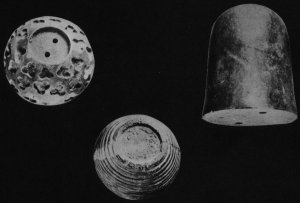


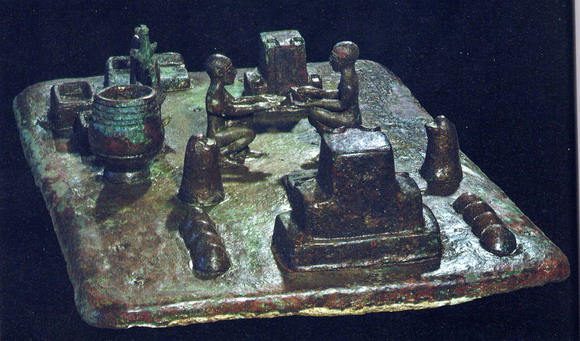

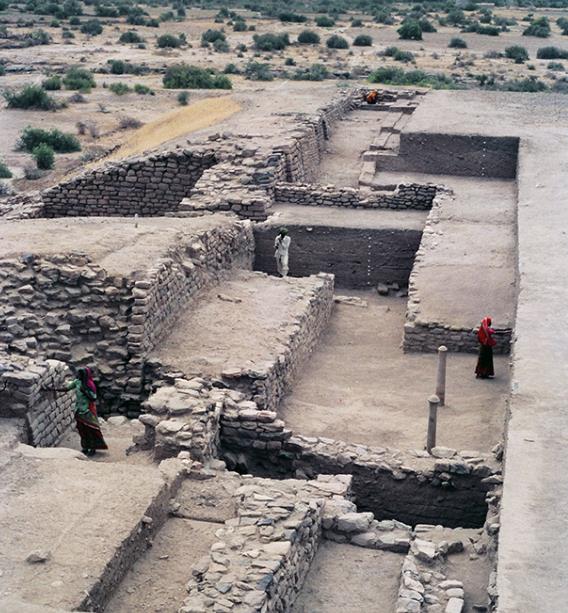



 A pair of Skambha in Dholavira close to kole.l'smithy, temple' ( (8-shaped stone structure):
A pair of Skambha in Dholavira close to kole.l'smithy, temple' ( (8-shaped stone structure):  Worshippers of a fiery pillar, Amaravati stupa.
Worshippers of a fiery pillar, Amaravati stupa.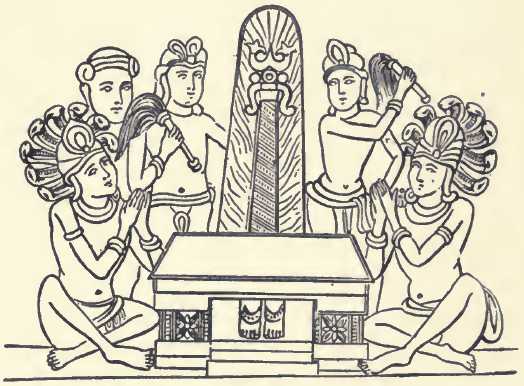 Naga worshippers of fiery pillar, Amaravati stupa.
Naga worshippers of fiery pillar, Amaravati stupa. 
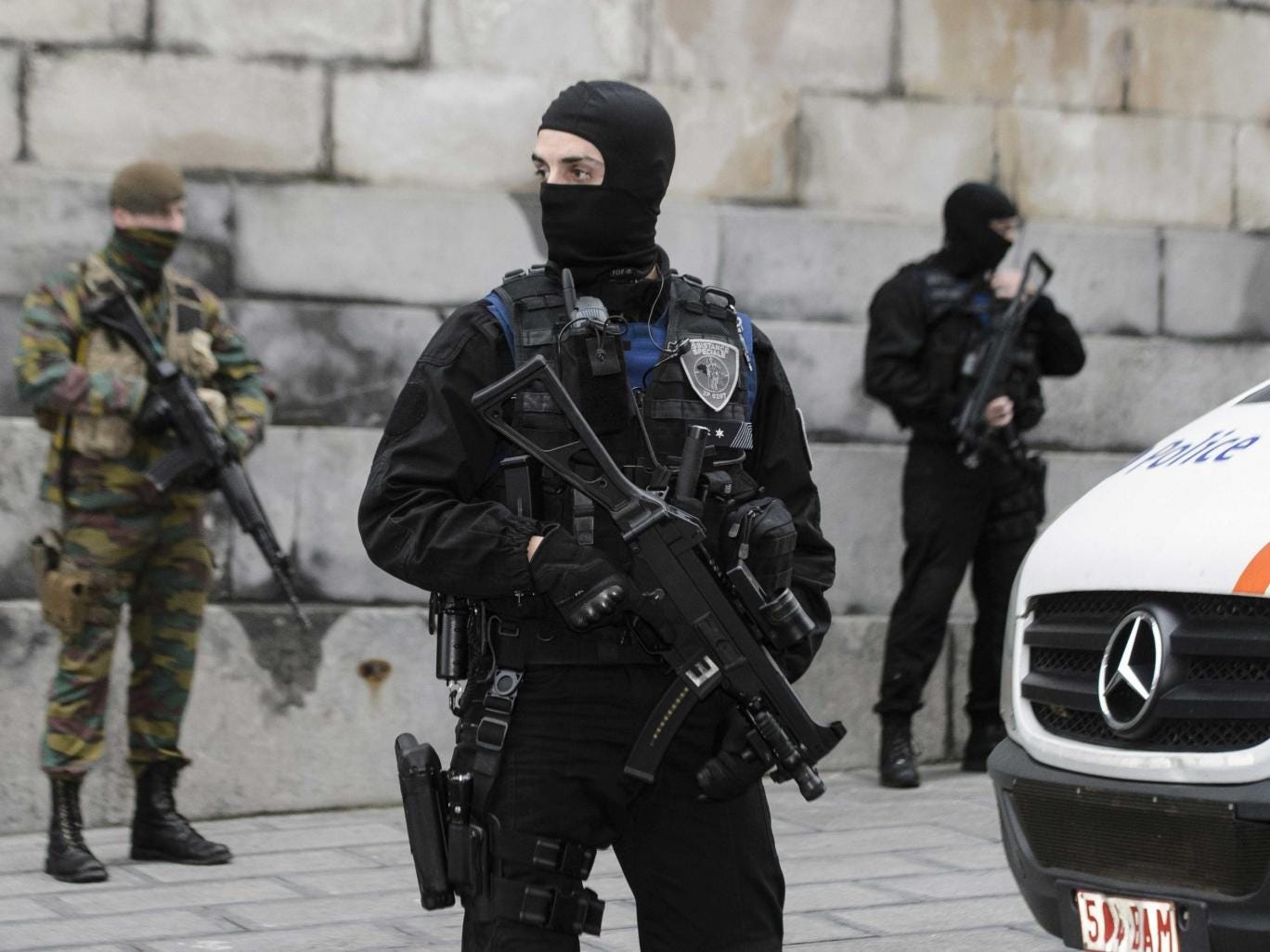

 File:
File: 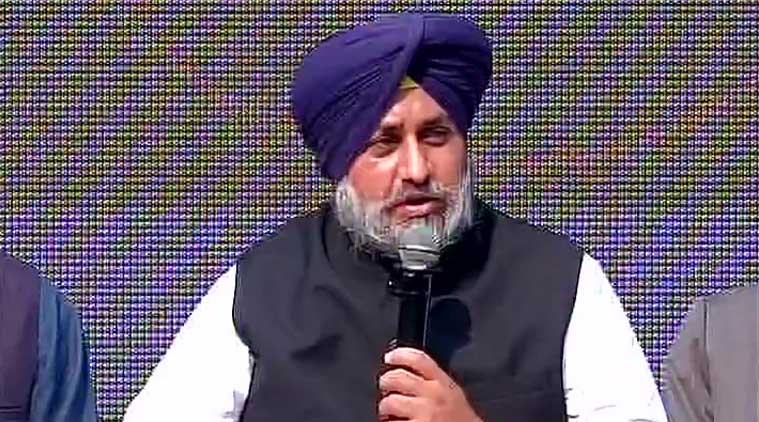








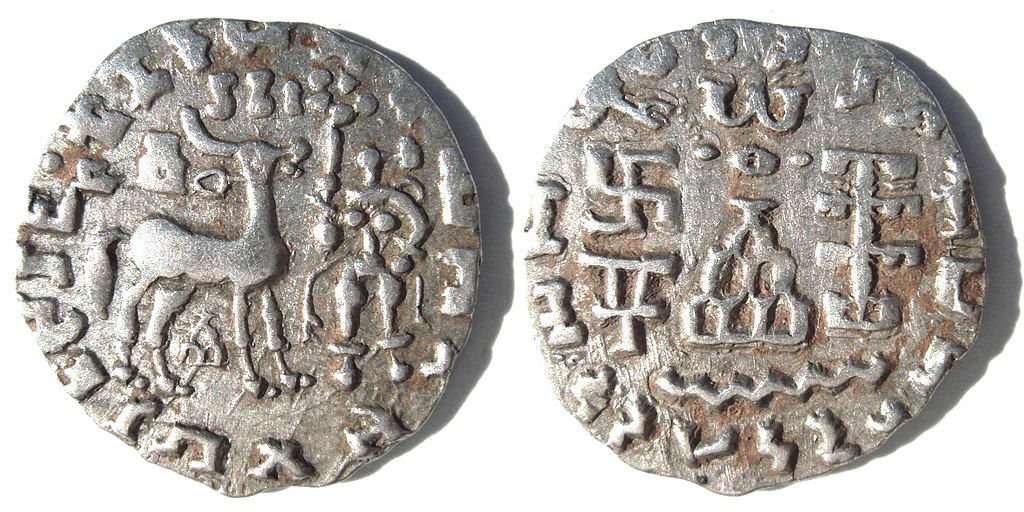

 deciphered in:
deciphered in: 

 Hieroglyph:er-aka 'upraised hand' (Tamil) erhali to hold out the
Hieroglyph:er-aka 'upraised hand' (Tamil) erhali to hold out the 
 A Vijayanagar relic
A Vijayanagar relic







AND His team and clearly UNDERSTAND THE TRICKS OF OUR ENEMIES AND
BETRAYERS, AND SOLVE COMPLEX PROBLEMS IN WIPING OUT HINDU SELL OUT CROWDS AND Hindu BETRAYERS NOW, THESE ENEMY AGENTS WILL DESTROY INDIA, please stand behind Modi and save our religion and the world.’
Please search Google> Who Should be Indian PM? by Dirgha Raj Prasai> and read all about India’s situation.
Dirgha Raj Prasai
Kathmandu